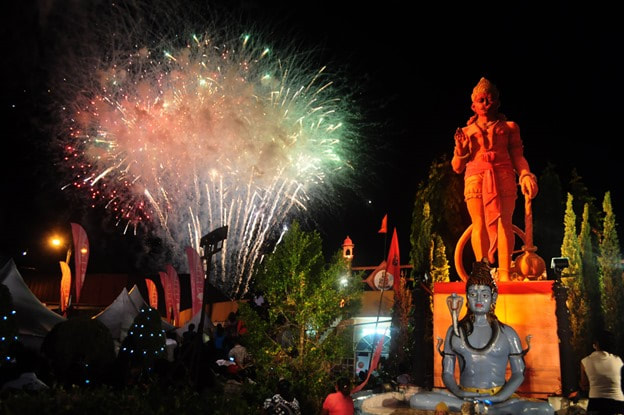|
AUTHOR AND RESEARCHER HISTORIAN ANGELO BISSESSARSINGH ( HMG) In this the final chapter of this series we will look at how the ancient festival of Divali found its home in Trinidad and evolved. In the past two episodes we have traced the roots of the celebration and its arrival in the west in the hearts and minds of the Hindus among the indentured immigrants who began arriving as labour for the sugar plantations in 1845. Felicity can be honoured as the first district which pioneered the large-scale communal celebrations of the festival of lights as was noted by Morton Klass, an anthropologist who lived in the area in the 1950s. Klass also noted that modern technology was being introduced as he recounted: “Two or three wealthy families in central Felicity tried an innovation the year I resided in the village: strings of vari-coloured electric bulbs were festooned around their houses, forming a major part of their displays though a few deyas were still in evidence. The saving in coconut oil is of course offset by the cost of the bulbs and electricity.” Today the Felicity celebrations are heavily electrified and powerful fireworks now lighten the sky but the time-honoured deyas mounted on bamboo scaffolds are still of key importance. Nothing however exemplifies how important Divali has become to the national landscape (the holiday was officially declared in 1966) than the Divali Nagar. The best way to describe the Nagar is as a grand fair centred around Divali that blends the ancient civilization of India with the heady pulse and tempo of life that make Trinis world famous. Located just east of the metropolis of Chaguanas the expansive space that is transformed annually into the gaudy extravaganza was designated for this purpose in 1986 after the original location at the Mid Center Mall carpark proved inadequate. From day one the Nagar, which opens a few weeks before the Divali holiday, proved to be a wild success as hundreds of vendors flocked to the area. It has since been upgraded to include a pavilion, an air-conditioned indoor hall, a magnificent statue and landscaped grounds. An old locomotive and bogie cart silent reminder of the island’s sugar industry (the original impetus for labour from India in 1845) stands to the rear of the compound. The National Council for Indian Culture is the body that oversees the Nagar and ensures that the fair opens with a dramatic launch that draws a wide spectrum of people from every walk of life, from government ministers to the burgesses of the area. To the first time visitor, the Nagar experience immediately assaults all the senses. The aroma of pholourie, aloo pies and saheenas frying in coconut oil clashes with the pungent curries being prepared just a few feet away. The riot of colour is almost psychedelic as elegant silk saris , heavy with embroidery mingle with delicate filigree jewellery crafted locally as well as imported from India. At all times, the fine sounds of classical Indian music can be heard, occasionally broken by more invigorating Indo Caribbean beats. The Divali Nagar is an addictive experience as evidenced by the thousands of cars and buses which converge every day whilst the festival is in session, all with the expectation of imbibing the essence of the Divali Nagar. FIREWORKS AT THE DIVALI NAGAR- PHOTO COURTESY EDISON BOODOOSINGH (2015
0 Comments
Leave a Reply. |
T&T news blogThe intent of this blog is to bring some news from home and other fun items. If you enjoy what you read, please leave us a comment.. Archives
May 2025
Categories
All
|


 RSS Feed
RSS Feed